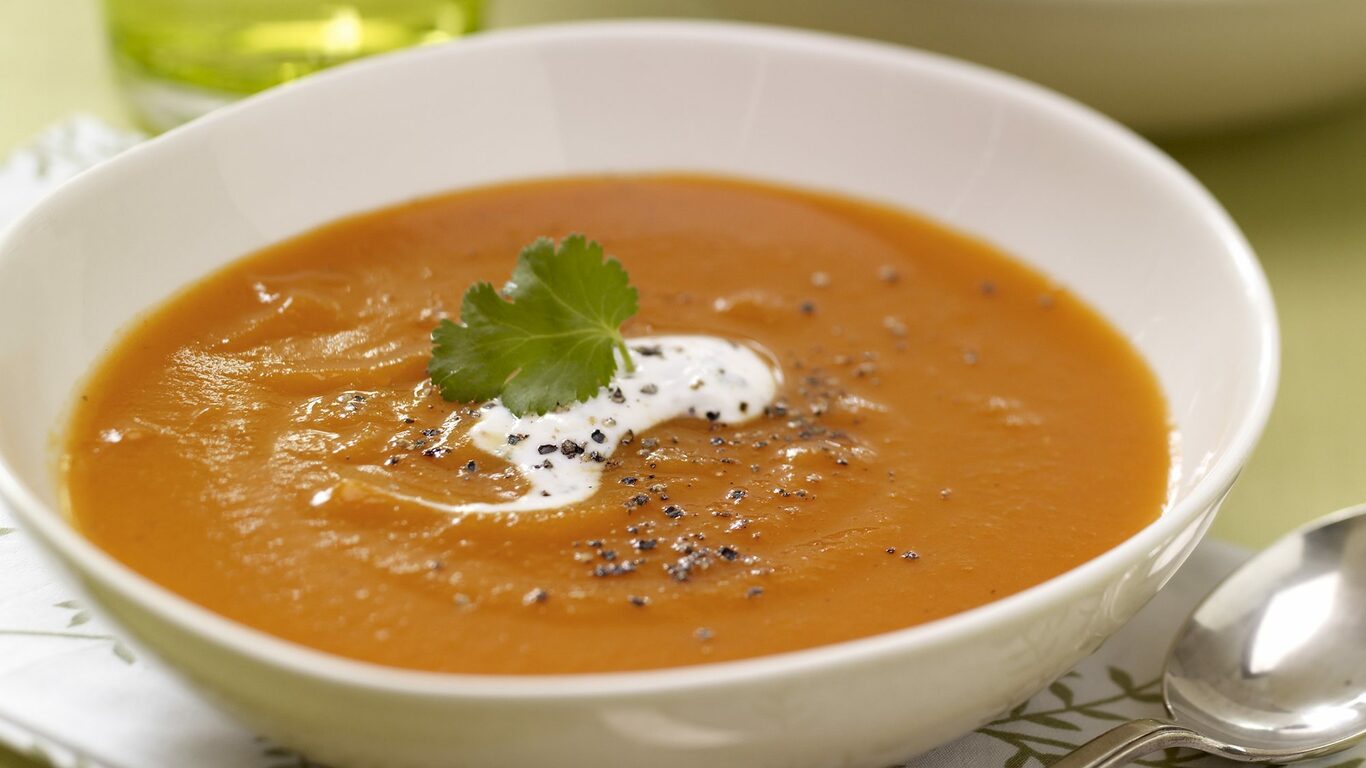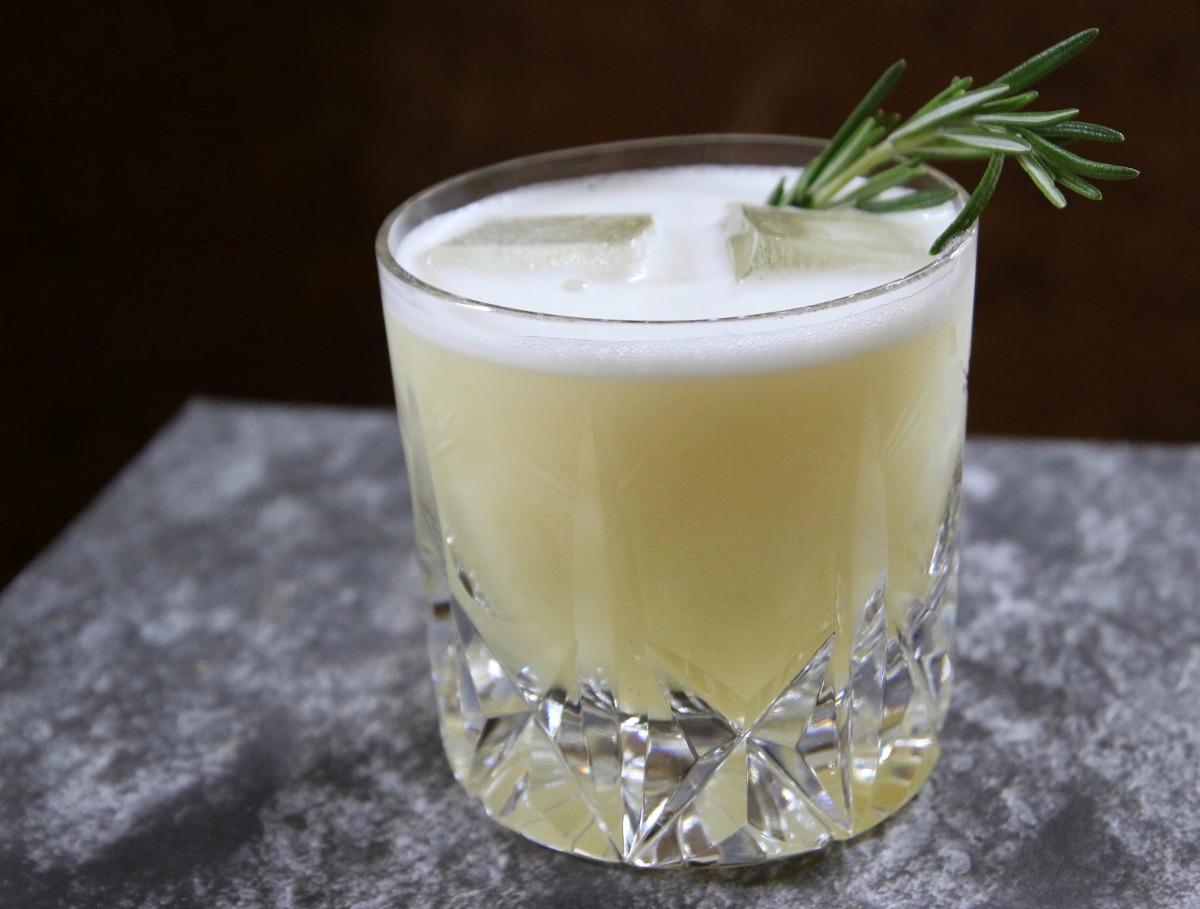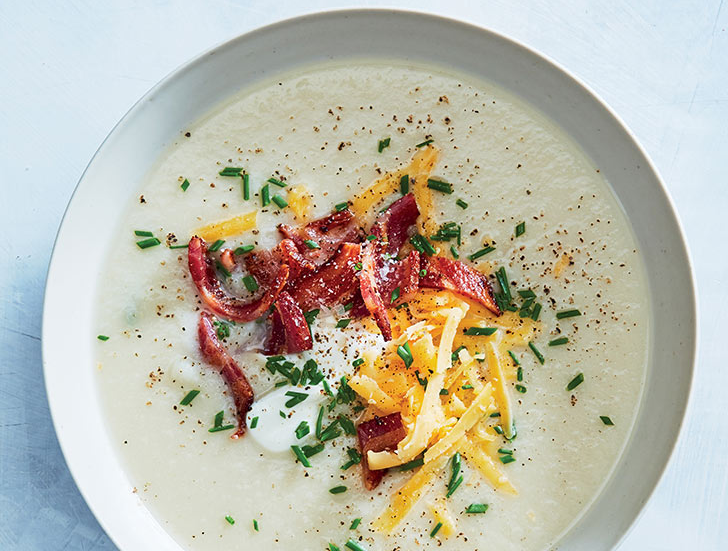Allegedly, there’s no wrong way to make a pot of puréed vegetable soup. But I dunno—have you ever made a really bad batch? At its worst, it’s truly unsalvageable; a bland, watery disaster that no amount of clever seasoning and full-fat dairy can help.
I know from experience that there’s a right way and a wrong way to blitz a bunch of cooked vegetables together. Unfortunately, I didn’t learn the right way until earlier this year: Roast a sheet pan of vegetables for half an hour, sweat some aromatics in a covered pot for the same amount of time, combine them, and briefly simmer with stock or cream. Purée. It’s slightly more effort than chucking raw vegetables in a pot, but since the roasting and sweating happen simultaneously—and don’t need to be stirred—it doesn’t feel like it at all. The payoff is worth those few extra minutes of prep.
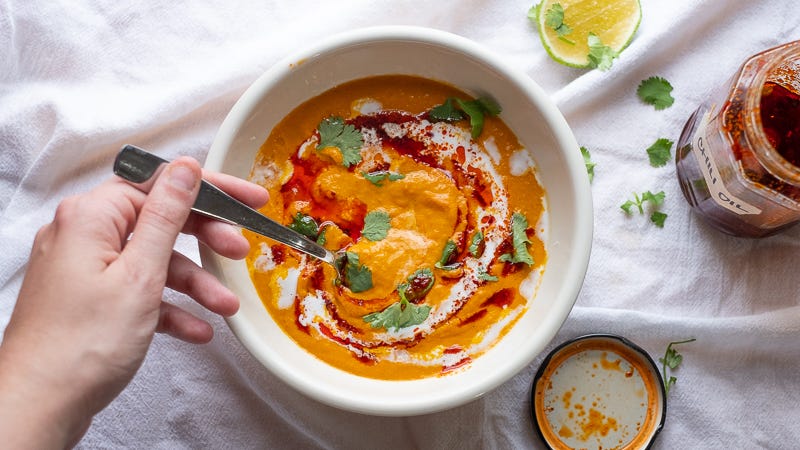
Photo: A.A. Newton
This technique comes from an Alexandra Stafford recipe for curried carrot soup that she got from The Placid Baker in Troy, New York. It instantly earned a spot in my repertoire; I started spamming my food-related group chats with the recipe (and texting my mom about it) after my very first bite. Carrot-ginger soup can so easily be either bland or way too much, and this one is just perfect: smooth and complex, with a warming hit of ginger that gets you in the back of the throat in the best way.
Stafford attributes its complexity to the two-phase cooking process, and I agree. Caramelizing some vegetables in a hot oven while basically steaming the others brings out the best in each ingredient, creating layers and layers of flavor with very little effort. Even though I always come back to carrot-ginger, this technique works wonders on any puréed vegetable soup: potato leek, butternut or kabocha squash, tomato, cream of mushroom, and even broccoli cheddar.
Besides salt and oil, you need exactly five things to make the best vegetable soup of your life: vegetables for roasting, aromatics for sweating, spices, some kind of flavorful liquid, and something acidic. The main vegetables can be anything roast-able, but for aesthetic reasons, I usually stick to a color family. As for aromatics, onions are a given for me, as is celery—I think celery makes soup taste like soup, even when it’s not obviously there—but if you prefer garlic, ginger, scallions, leeks, or fennel, by all means, throw those in.
Such as they are, those are the “rules” for perfect puréed vegetable soup. Everything else is customizable. The correct amount of vegetables is what fits comfortably in your largest sheet pan and the correct amount of liquid is the amount that covers the vegetables; there’s no particular weight or volume to aim for. Use as many or as few spices as you like—a teaspoon is a good starting point for most—and choose any liquid you have around. Homemade stock is excellent, but so is the stuff from a box, and coconut milk, heavy cream, bean broth, reserved pasta water, and even plain tap water all do nicely.
Since carrot soup is one of my favorites (and takes a pretty picture), that’s what I used today, adding some cherry tomatoes, a red bell pepper, and a sad old potato that was on its way out. For aromatics, I used a medium yellow onion and three big stalks of celery, plus a half-inch piece of ginger; my spices were a heaping teaspoon each of ground turmeric, coriander, garam masala, and a big pinch of cayenne. I chose coconut cream and water as my liquids, plus a cup of chicken stock I found in the back of my fridge. For the acidic finishing touch, it had to be lemon.
To make the soup, set a large sheet pan on the bottom rack of your oven and preheat to 425ºF. Preheating the pan protects against sticking and jumpstarts the Maillard reaction. While it heats up, chop your roasting vegetables into chunks, tossing them into your soup pot as you go. Add 2 or 3 tablespoons of oil and about half a teaspoon of salt; stir until evenly coated. When the oven is fully preheated, carefully pour the veggies onto the hot sheet pan and roast on the bottom rack for 20 minutes.
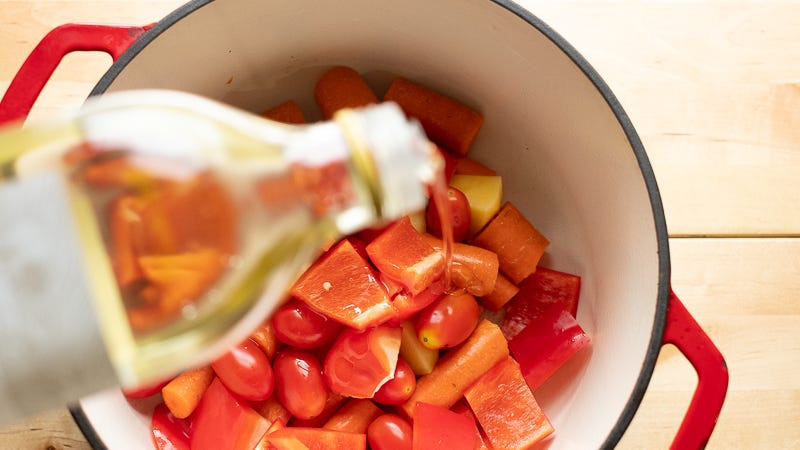
Photo: A.A. Newton
While the vegetables roast, finely chop your aromatics, add them to the soup pot—no need to wipe it out—and add another tablespoon of oil and a pinch of salt. Cook over medium-high heat until sizzling and steaming. Reduce heat to medium-low, put the lid on, and cook undisturbed for at least 15 or 20 minutes. Go do something else.
Give the veggies in the pot a stir and replace the lid; if you notice browning, lower the heat. Move the pan of roasted veggies to the top oven rack and gently shake the pan to move them around a bit. Let everything cook for another 5-10 minutes, until the aromatics are translucent and soft and the roasted veg is tender and nicely caramelized.
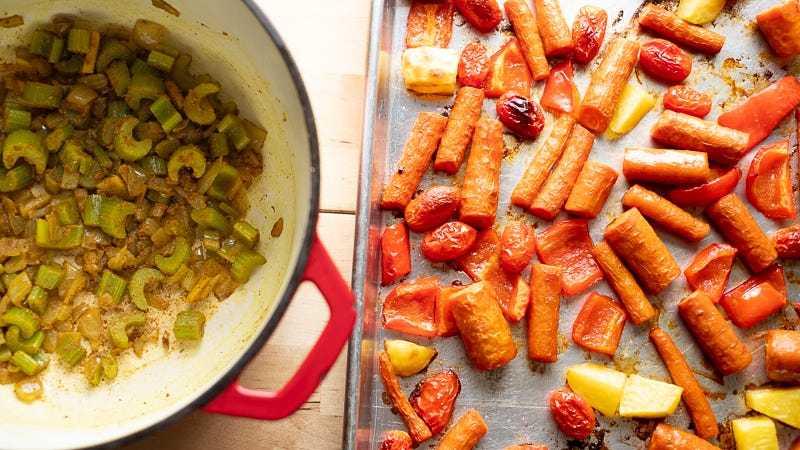
Photo: A.A. Newton
Add your spices to the pot and cook for a minute, stirring constantly to prevent scorching. Scoop the roasted veggies into the pot, then deglaze your sheet pan with half a cup of stock or water and scrape up every last bit of fond with a spatula.

Photo: A.A. Newton
Pour the deglazing liquid into the pot, along with enough stock, cream, and/or water to just barely cover the vegetables. Bring to a boil, reduce the heat, and simmer until the vegetables are extremely tender—no more than five minutes.

Photo: A.A. Newton
Purée to desired thickness with an immersion blender and season to taste with lemon juice or vinegar, salt, and additional spices. Serve hot, as-is or dressed up with chopped fresh herbs, hot sauce, chili oil, lemon or lime wedges, yogurt, cream—or anything else you think it needs. Repeat all winter long.
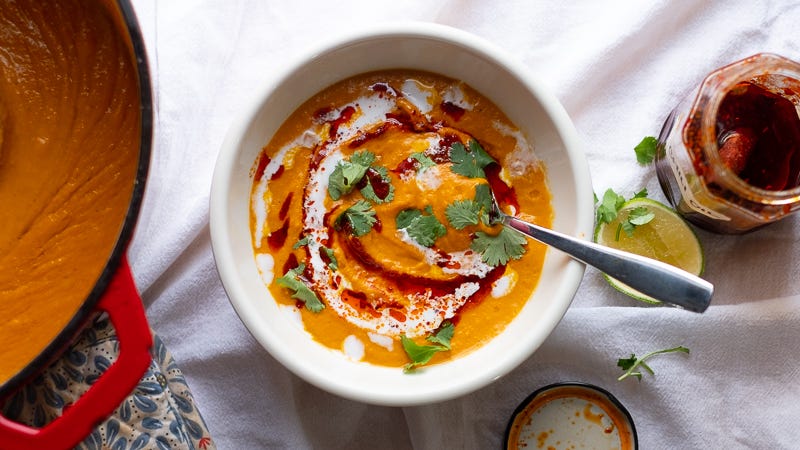
Photo: A.A. Newton
This article was written by A.A. Newton on Skillet and shared by A.A. Newton to Lifehacker from Lifehacker and was legally licensed through the NewsCred publisher network. Please direct all licensing questions to legal@newscred.com.


